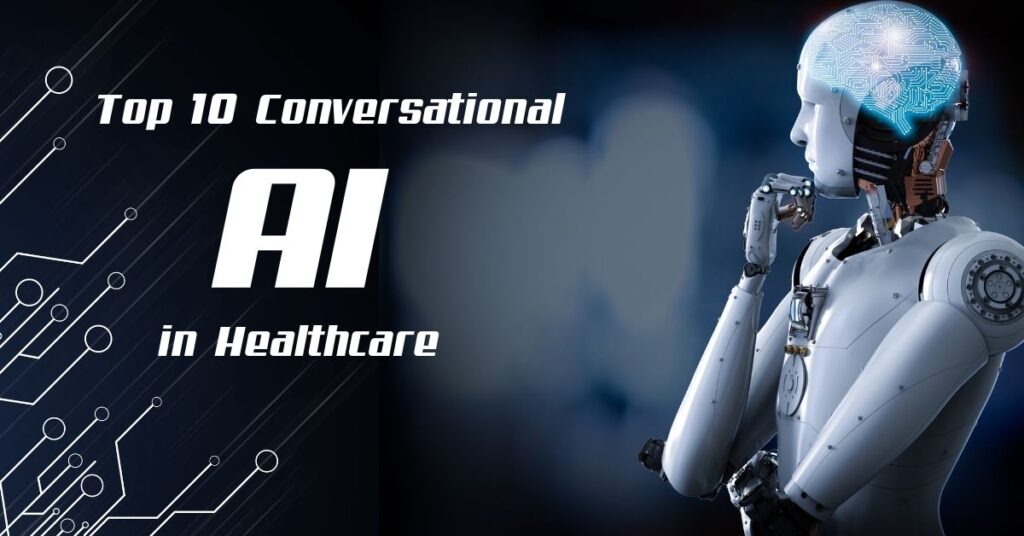
Welcome to the first section of our upcoming article on predictive analytics in healthcare. In this article, we will explore the power of predictive analytics and its impact on transforming healthcare outcomes.
Predictive analytics is a discipline that leverages advanced modeling, data mining, AI, and machine learning techniques to analyze vast amounts of healthcare data. By analyzing current and historical data, predictive analytics enables healthcare professionals to make data-driven decisions, enhance patient care, and optimize operations.
Healthcare analytics encompasses various types of data, including medical records, surveys, and electronic health records (EHRs). Through healthcare data analysis, predictive analytics can be used in clinical research, developing new treatments, predicting and preventing diseases, and much more.
Stay tuned for the upcoming sections where we will delve into the benefits of predictive analytics in healthcare, its role in preventing hospital readmissions, managing population health, enhancing cybersecurity, increasing patient engagement, streamlining administrative tasks, and more.
Let’s explore how predictive analytics is revolutionizing the healthcare industry driving improved patient outcomes and optimizing healthcare delivery.
- The Benefits of Predictive Analytics in Healthcare
- Predictive Analytics in Preventing Readmissions
- Managing Population Health with Predictive Analytics
- Enhancing Cybersecurity with Predictive Analytics
- Increasing Patient Engagement and Outreach
- Speeding Up Insurance Claims Submission with Predictive Analytics
- Conclusion
- FAQ
The Benefits of Predictive Analytics in Healthcare
Predictive analytics in healthcare offers a wide range of benefits that can revolutionize the industry. By leveraging advanced data analysis techniques, healthcare organizations can gain valuable insights, make better-informed decisions, and deliver improved patient care. Let’s explore some of the key advantages of predictive analytics in healthcare.
1. Healthcare Data Insights: Predictive analytics provides healthcare organizations with access to a wealth of data from various sources, including medical records, surveys, and electronic health records (EHRs). By analyzing this data, healthcare professionals can gain valuable insights into patient behavior, treatment outcomes, disease patterns, and more. These insights enable them to make data-driven decisions and optimize patient care.
2. Healthcare Data Visualization: Predictive analytics also enables healthcare professionals to visualize complex healthcare data in a more understandable and intuitive way. Through interactive charts, graphs, and dashboards, they can identify trends, patterns, and anomalies in the data easily. This visual representation of data aids in better decision-making and clearer communication among healthcare teams.
3. Healthcare Predictive Modeling: Predictive modeling in healthcare allows healthcare professionals to forecast outcomes and make accurate predictions. By leveraging historical data, they can develop models that help identify patients at risk of developing certain conditions, predict disease progression, and anticipate future healthcare needs. This enables early intervention, personalized treatments, and improved patient outcomes.
4. Healthcare Trend Analysis: Predictive analytics helps healthcare organizations analyze trends and patterns in healthcare data. By identifying these trends, they can proactively address emerging healthcare issues, develop preventive measures, and allocate resources efficiently. Trend analysis also facilitates research and aids in the development of evidence-based healthcare strategies.
5. Enhanced Operational Efficiency: Predictive analytics streamlines administrative tasks and improves operational efficiency in healthcare organizations. By automating processes, optimizing resource allocation, and reducing inefficiencies, predictive analytics reduces costs and frees up valuable time for healthcare professionals to focus on patient care.
6. Improved Patient Outcomes: Perhaps the most significant benefit of predictive analytics in healthcare is the potential for improved patient outcomes. By leveraging data insights, predictive models, and trend analysis, healthcare professionals can make more accurate diagnoses, provide personalized treatments, and prevent adverse events. This ultimately leads to better patient outcomes and an enhanced quality of care.
Embracing predictive analytics in healthcare can pave the way for transformative advancements in patient care, operational efficiency, and overall healthcare management. By harnessing the power of data and analytics, healthcare organizations can unlock new possibilities and shape the future of the industry.
Related Post: The Top 10 Conversational AI for Healthcare in 2024
Predictive Analytics in Preventing Readmissions
Predictive analytics can play a crucial role in reducing readmission penalties and improving patient outcomes. By leveraging advanced data analysis techniques, healthcare professionals can identify patients at high risk of readmission and implement personalized discharge protocols to provide targeted interventions.
Through the analysis of patient data, predictive analytics enables healthcare organizations to gain insights into the factors contributing to readmissions. By understanding these patterns and risk factors, healthcare professionals can develop personalized care plans that address the individual needs of each patient, reducing the likelihood of readmission and improving overall patient satisfaction.
Implementing predictive analytics solutions has shown promising results in healthcare organizations, with significant reductions in readmission rates reported. This not only benefits patients by minimizing the need for potentially avoidable rehospitalization but also helps healthcare providers avoid penalties associated with high readmission rates.
By allocating resources for follow-up care based on predictive analytics insights, healthcare professionals can prioritize high-risk patients and provide timely interventions. This personalized approach ensures that patients receive the appropriate support and monitoring after discharge, reducing the likelihood of complications and readmission.
Overall, predictive analytics in preventing readmissions empowers healthcare professionals with the knowledge and tools to proactively address patient needs and deliver optimized care beyond the hospital walls. By leveraging data-driven insights, healthcare organizations can make informed decisions, enhance patient outcomes, and ultimately create a more efficient and effective healthcare system.
Managing Population Health with Predictive Analytics

Predictive analytics plays a crucial role in managing population health. By leveraging advanced analytics techniques and analyzing large amounts of data, healthcare professionals can identify individuals at risk of developing chronic conditions and provide preventive care to prevent disease progression.
One of the key advantages of predictive analytics in population health management is its ability to identify public health trends and forecast disease outbreaks. By detecting patterns and analyzing data from various sources, healthcare professionals can make informed decisions and implement preventive measures to protect the community.
For example, predictive analytics can help healthcare organizations identify areas with a high concentration of individuals at risk of chronic diseases such as diabetes or heart disease. This information allows for targeted interventions and resource allocation to improve overall population health.
Chronic Disease Management
Predictive analytics enables proactive chronic disease management by identifying individuals who are at risk of developing certain conditions. By leveraging historical health data and risk assessment models, healthcare professionals can intervene early and provide personalized care to prevent disease progression. This approach not only improves health outcomes but also helps reduce healthcare costs associated with chronic diseases.
Identifying Public Health Trends
Through advanced data analysis, predictive analytics can identify emerging public health trends. By monitoring data from various sources, including social media, wearable devices, and electronic health records, healthcare professionals can detect patterns and identify potential health risks. This enables timely intervention and the implementation of preventive measures to safeguard the health of the population.
Detecting Disease Outbreaks
Predictive analytics can also play a crucial role in detecting disease outbreaks. By analyzing data from sources such as emergency room visits, diagnostic tests, and pharmacy records, healthcare professionals can identify early warning signs and take immediate action to contain and manage outbreaks.
Overall, predictive analytics in managing population health empowers healthcare organizations to make data-driven decisions, implement preventive measures, and allocate resources effectively. By leveraging this powerful tool, healthcare professionals can improve the health outcomes of the population and create a healthier community.
Enhancing Cybersecurity with Predictive Analytics
The healthcare sector faces significant cybersecurity threats, and the importance of protecting sensitive patient data cannot be overstated. Predictive analytics emerges as a powerful tool in bolstering healthcare cybersecurity. By harnessing the capabilities of predictive analytics combined with artificial intelligence (AI), healthcare organizations can proactively identify vulnerabilities, calculate risk scores for online transactions in real-time, and promptly respond to potential threats.
One of the key applications of predictive analytics in healthcare cybersecurity is monitoring data access. By closely examining patterns and behaviors related to data sharing, healthcare organizations can swiftly detect any irregularities that may indicate an intrusion or cyberattack. This proactive monitoring helps organizations implement robust security measures and protect against potential breaches.

Moreover, predictive modeling in healthcare allows organizations to continually assess risk and identify potential vulnerabilities. By analyzing vast amounts of data, predictive analytics algorithms can identify patterns and indicators of cyber threats, enabling healthcare professionals to take appropriate preventive actions.
By integrating predictive analytics into their cybersecurity strategy, healthcare organizations can optimize their defenses, ensuring the protection of patient data and safeguarding privacy. These efforts contribute to maintaining the trust patients place in healthcare providers and demonstrate a commitment to prioritizing cybersecurity in an increasingly digital landscape.
Increasing Patient Engagement and Outreach
Predictive analytics is a powerful tool in healthcare that goes beyond data analysis. It also plays a crucial role in enhancing patient engagement and outreach. By leveraging patient behavior insights, healthcare professionals can take a proactive approach in providing personalized care and reaching out to patients effectively.
Using predictive analytics, healthcare organizations can analyze patient behavior patterns and identify potential areas of non-compliance. This allows healthcare professionals to address these issues promptly and engage patients in their own healthcare journey. By understanding patient preferences and needs, healthcare providers can tailor their approach and offer personalized care that resonates with patients. This personalized approach fosters trust and strengthens the patient-provider relationship, leading to better health outcomes.
Moreover, predictive analytics enables healthcare organizations to develop targeted marketing campaigns to acquire new patients and improve patient retention. By analyzing patient data, such as demographics, medical history, and preferences, healthcare providers can create personalized campaigns that speak directly to the needs and interests of their target audience. This not only attracts new patients but also keeps existing patients engaged and satisfied with their healthcare experience.
With predictive analytics, healthcare professionals can ensure that patients receive the information and support they need, when they need it. By proactively engaging patients and tailoring their approach, healthcare organizations can improve patient satisfaction, loyalty, and overall health outcomes.
Speeding Up Insurance Claims Submission with Predictive Analytics
Predictive analytics can revolutionize the insurance claims submission process by leveraging data analysis to identify patterns that may cause delays or hinder the overall claims processing. By harnessing the power of predictive analytics, healthcare organizations can proactively identify potential issues and streamline administrative tasks, ultimately expediting the claims submission process. This not only leads to faster reimbursements but also enhances overall financial efficiency for healthcare providers.
The use of predictive analytics in insurance claims allows healthcare organizations to analyze vast amounts of data and gain valuable insights into the claims submission process. By evaluating historical claims data, predictive analytics can identify common bottlenecks and streamline the necessary administrative tasks. This ensures that claims are submitted accurately and efficiently, reducing the likelihood of rejection or further delays.
Furthermore, predictive analytics can help healthcare organizations identify patterns and trends that may lead to potential claim issues. It can detect inconsistencies, errors, or missing information, prompting proactive action to rectify these issues before submission. By addressing these issues upfront, healthcare organizations can minimize the need for follow-up queries, resulting in a faster claims processing timeline.
Optimizing Claims Processing through Predictive Insights
Predictive analytics enables healthcare organizations to make data-driven decisions throughout the claims submission process. By leveraging advanced algorithms, machine learning, and predictive modeling, healthcare providers can accurately predict claims outcomes and allocate resources effectively. This not only expedites the claims processing timeline but also ensures that resources are optimized for maximum efficiency.
Through predictive analytics, healthcare organizations can gain valuable insights into the claims evaluation and adjudication process. By analyzing historical data, predictive models can predict the likelihood of claim approval or denial for specific cases, allowing healthcare providers to allocate appropriate resources accordingly. This enables them to prioritize claims that are more likely to be approved, reducing the overall waiting time for claimants and enhancing customer satisfaction.
Streamlining administrative tasks is another key advantage of predictive analytics in the insurance claims process. By automating repetitive and time-consuming tasks, healthcare organizations can significantly reduce manual intervention and human error. This not only saves valuable time but also allows administrative staff to focus on more critical tasks, such as addressing complex claims or providing personalized customer service.
In conclusion, predictive analytics plays a crucial role in speeding up the insurance claims submission process. By leveraging data analysis and predictive insights, healthcare organizations can streamline administrative tasks, identify potential issues, and optimize the claims processing timeline. This leads to faster reimbursements, improved financial efficiency, and enhanced customer satisfaction.
Conclusion
Predictive analytics in healthcare is revolutionizing the industry by harnessing the power of advanced analytics techniques and large-scale data analysis. With the ability to make data-driven decisions, healthcare professionals can transform patient care, optimize operations, and improve outcomes.
By leveraging predictive modeling in healthcare, healthcare data science can provide invaluable insights and predictions. Healthcare organizations can benefit from accurate trend forecasting, personalized treatments, and more informed decision-making processes.
The impact of predictive analytics extends beyond individual patient care. It enhances population health management by identifying at-risk individuals, detecting disease outbreaks, and allowing for proactive measures to be taken to prevent the progression of chronic diseases.
Moreover, predictive analytics plays a vital role in cybersecurity, as healthcare organizations can identify potential threats and respond in real time. It also enhances patient engagement by enabling personalized outreach and campaigns based on patient behavior and preferences.
As the healthcare industry embraces technology and continues to advance, predictive analytics will play an increasingly important role. It has the potential to shape the future of healthcare by optimizing patient care, improving population health, enhancing cybersecurity, and streamlining administrative tasks.
FAQ
What is predictive analytics in healthcare?
Predictive analytics in healthcare is a discipline that uses modeling, data mining, AI, and machine learning techniques to analyze current and historical healthcare data. It helps healthcare professionals make data-based decisions, improve patient care, and optimize operations.
How can predictive analytics benefit the healthcare industry?
Predictive analytics provides healthcare organizations with access to various types of data, allowing for better-informed decisions and improved patient care. It can help reduce costs, prevent readmissions, manage population health, enhance cybersecurity, increase patient engagement, and speed up administrative tasks.
How does predictive analytics help prevent hospital readmissions?
By analyzing patient data, healthcare professionals can personalize discharge protocols and provide targeted interventions to reduce the likelihood of readmission. Organizations have reported significant reductions in readmission rates after implementing predictive analytics solutions.
How does predictive analytics contribute to managing population health?
Predictive analytics can identify individuals at risk of developing chronic conditions and provide preventive care to prevent disease progression. It also helps identify public health trends and forecast outbreaks, enabling informed decisions and effective resource allocation.
How can predictive analytics enhance healthcare cybersecurity?
By utilizing predictive analytics coupled with AI, healthcare organizations can calculate risk scores for online transactions, identify potential threats, and respond in real-time. Predictive modeling can monitor data access and sharing to detect any changes that may indicate an intrusion or cyberattack.
How does predictive analytics improve patient engagement?
By analyzing patient behavior and identifying non-compliance, healthcare professionals can take a proactive approach in providing personalized care and outreach. Predictive analytics also enables targeted marketing campaigns for patient acquisition and retention.
How can predictive analytics speed up insurance claims submission process?
By analyzing data patterns, healthcare organizations can streamline administrative tasks and identify potential issues that may delay or hinder claims processing. This leads to faster reimbursements and improved financial efficiency.
What are the key takeaways of predictive analytics in healthcare?
Predictive analytics leverages advanced techniques to make informed decisions, predict trends, and provide personalized treatments. Its benefits extend to population health management, cybersecurity, patient engagement, and administrative efficiency, ultimately optimizing patient care and outcomes.

